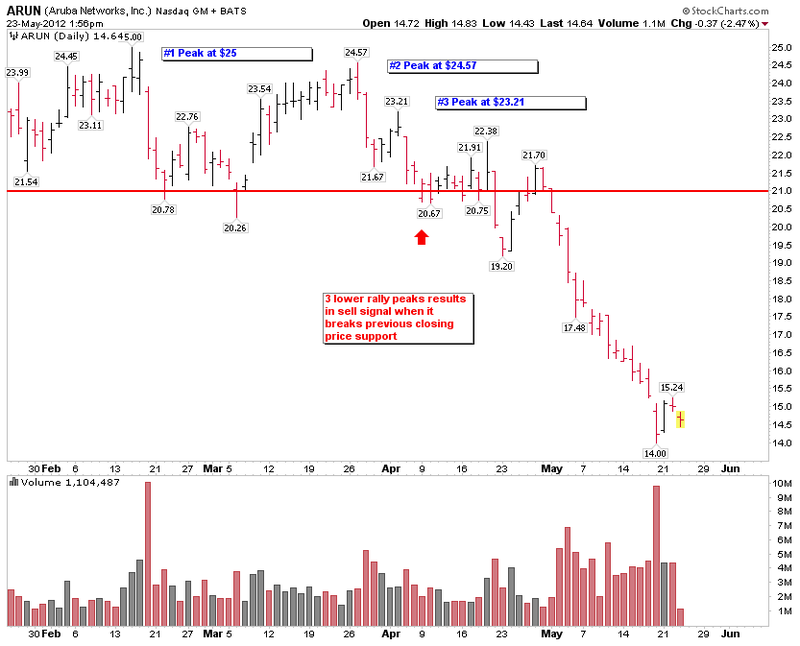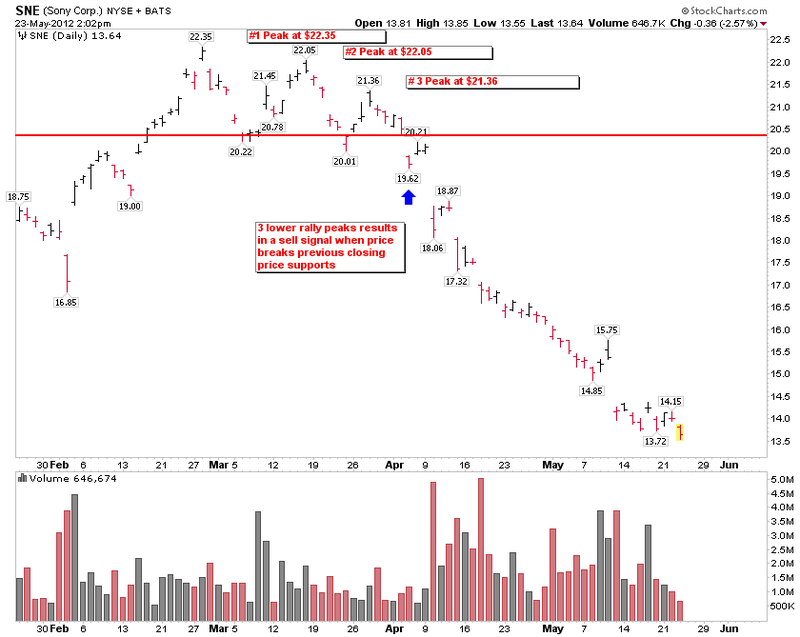In its most elemental form, selling is an inner struggle that deals with an investor’s ability to tame two wild horses: one’s own inner fear and greed. In his book Trading in the Zone, Mark Douglas wrote that an investor must address four types of fear:
- losing money
- missing an opportunity
- leaving money on the table
- being wrong
Although I agree with Mark, there is much more to understand before an investor earns his “selling badge”.
For this reason, my number one selling rule has two parts:
- you must have a selling system
- you must develop your own system yourself: design it and embrace it.
I will share my system later, but for now I need you to buy into the necessity of Rule Number One for you. In doing so, remember that the market will offer continuous feedback as an equity deteriorates. Each clue it offers up will cost you more money. Your system will depend on the types of clues you deem valid and how many of these clues it will take to reach your “uncle point” and galvanize you into pulling the trigger to sell.
Appreciate that a selling system is meant to protect us from ourselves. It’s objective is enable us to protect our profits and not lose money. This leads to Rule Number Two: understand and overcome the demons of your own execution barriers. Some years ago, I polled my stock market class of eighty-plus investors and we identified four recurring barriers to selling:
- Investors fall in love with an equity and can’t part with it.
- Investors watch the ticks and miss the big picture. This is similar to the parable about the frog that sits in the pot, adjusting to small incremental changes in the water temperature and not jumping out, eventually being boiled to death.
- Investors have “analysis paralysis” where they constantly require one more clue before selling.
- Investors just freeze into inactivity. They simply can’t pull the trigger.
Be brutally honest with yourself. Do any of these apply to you? Are you willing to do what it takes to overcome these barriers?
As part of my own system, I incorporate a number of rules. Prior to these rules, you should understand my personal biases. I put my trust in the charts. I use my charts to eradicate the wild horses of fear and greed by viewing my equities as cold numbers rather than as emotional dollars.
Have you ever watched a truly frightening movie? One that induced nightmares for weeks? Then for some unbeknownst reasons, you watched it a second time and then many times more? You eventually gained control of your fears. You took charge of your emotions. Your “selling badge” has arrived!
The rules which are part of my selling system are:
- Actively adjust your stops.
- Never give back more than 50% of your profits. This is non-negotiable.
- Dump the losers; hold the winners.
- Ladder out of positions (often using market orders vs. limit orders) by selling a percentage of your position as more selling clues arrive
If you don’t have your own system yet, try this one. It’s a basic selling system that we could call “Three Descending Peaks or How to Get Out Before the Dumpster Fire”. Look at these charts:
Your homework is to apply this methodology to all your previous trades. How did it do? It doesn’t get you out at the top, but it’s easy to identify and it protects your profits.
Next Friday, I’ll share with you Part II: my personal selling system.
Trade well; trade with discipline!
-- Gatis Roze









